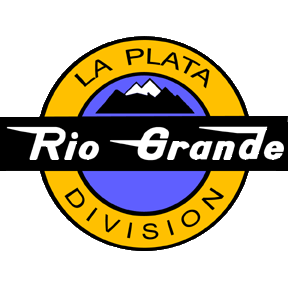

of the
|
This newest incarnation of the railroad gives me the
opportunity to engage in more realistic operations. With the
point-to-point design, classification yard, and sidings, I can now create realistic
operating sessions.
As mentioned elsewhere, I do not use a command-control system (DCC)-- the layout is simple block wiring with 2 power packs for the main and a third for yard operations. This is adequate for operations on a layout of this size.
Operating SessionsIn order to design a realistic session, I have begun analyzing historic traffic patterns along the Moffat Route, from North Yard westward. The situation varies greatly over time, so I am choosing a few sample periods. The first era I'm studying is the mid-Eighties. Below is a mini-summary of traffic. Odd numbers are westbound, even numbers eastbound. Number Dir Time in/out Comments 187 WB 5:30 Intermodal, autoracks from BN. UPS to Roper. 183 WB 6:00 Cargill export grain and other manifest freight. As needed. 136-6 EB 6:00 Manifest, lots of lumber from SP 102 EB 8:00 Railblazer, TOFC 5 WB 8:30 Amtrak California Zephyr 100 EB 11:45 Intermodal, autoracks from SP to BN 103 WB 18:00 RailBlazer TOFC 101 WB 19:30 intermodal, autoracks from BN to SP 6 EB 20:00 Amtrak California Zephyr 195 WB 20:00 TOFC, City Market trailers on end with extra caboose in middle. 134-6 EB 20:30 TOFC from Roper, often head-end tonnage. 709 WB flex CSUX, Nixon to Axial, empties, bi-weekly 710 EB flex CSUX, Axial to Nixon/Drake, loads, Wed/Sat. 702 EB flex PSCX, EB loads from Energy to Cherokee, daily 701 WB flex PSCX, WB empty from Cherokee to Energy, weekdays 717 WB flex CSUX empties from Nixon to Energy, weekly 718 EB flex CSUX loads from Energy to Nixon, weekly 713 WB flex DRGW hoppers, empty to Energy, weekly 714 EB flex DRGW hoppers, loads from Energy to Naples, Illinois, weekly Now, we factor in the realities of my layout, the limited number of passing sidings, and the actual bridge connections at each end (none!). From this we distill the list above into a workable two-person operating scheme, which I will call the Basic 1986 Session (daylight).
The operators then perform these jobs in sequence:
Which leaves us with this:
Testing this in real time with a single operator, I find that it takes at least 45 minutes in real time to complete. It would be somewhat faster with multiple operators.
As you can see, this is a much-simplified operating scheme. You'll also notice that I haven't included the Ski Train or the Amtrak operations. I need to clear up some yard space before I can take that on! There are plenty of times when I just want to run some trains around, so I certainly don't plan on always adhering to a schedule. It's nice to know that I am able do it when I want to, though. |
||||||||||||||||||||||||||||||||||||||||||||||||||||||||||||||||||||||||||||||||||
© 1998 - 2006, James R. Griffin. All rights reserved.